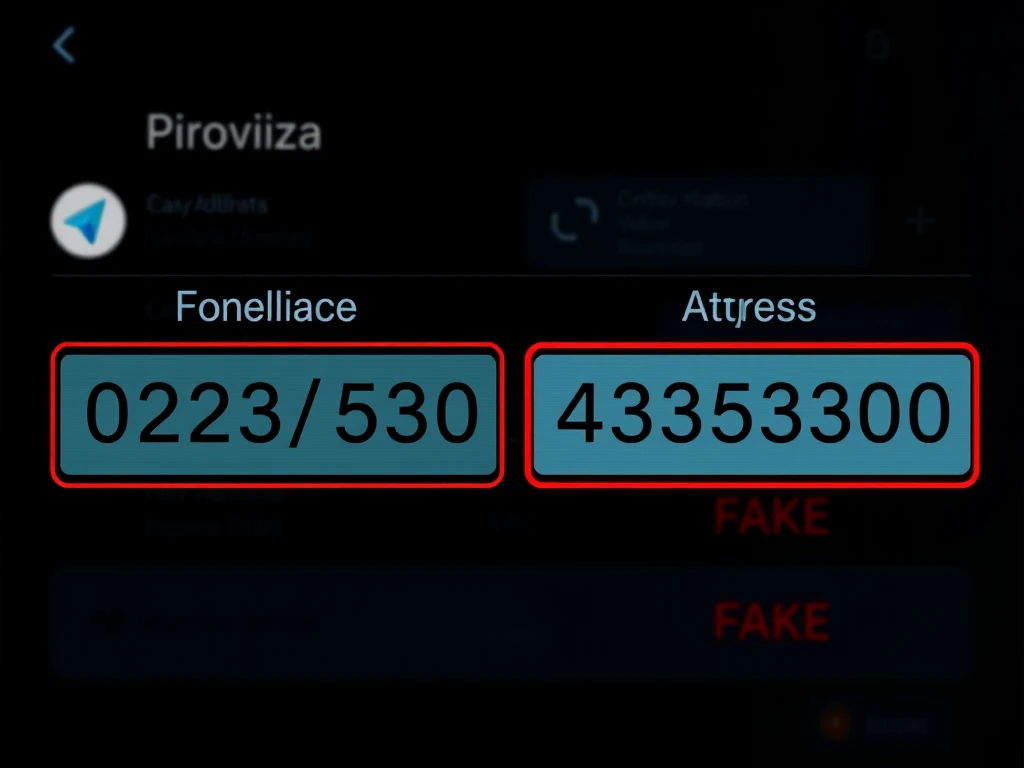Beware: Dangerous Address Poisoning Crypto Attacks and How to Protect Your Wallet

Navigating the world of cryptocurrencies is exciting, but it comes with risks. One increasingly common threat you need to know about is address poisoning crypto attacks. These sneaky scams target your wallet, aiming to trick you into sending your hard-earned funds to the wrong place. It’s like a digital con game where attackers exploit how you handle crypto addresses.
What is Address Poisoning Crypto?
At its core, address poisoning crypto is a type of scam where attackers try to deceive you into interacting with a fake cryptocurrency address that looks very similar to a legitimate one you’ve used before. Think of crypto addresses as unique street addresses on the blockchain. Attackers want to redirect your ‘mail’ (your crypto) to their address instead of the intended recipient’s.
These attacks don’t necessarily break the blockchain’s security itself. Instead, they target the human element – you. They exploit similarities in addresses, how wallets display transaction history, or use malware to swap addresses right before you make a transaction. The goal is simple: steal your digital assets.
Why is Crypto Wallet Security Crucial Against These Attacks?
Maintaining robust crypto wallet security is paramount because address poisoning preys on trust and routine. Attackers often send tiny, ‘zero-value’ transactions from addresses designed to mimic ones you frequently use. When you look at your transaction history later, you might see the attacker’s address listed alongside legitimate ones. If you’re not careful and simply copy an address from that history for a future transaction, you might accidentally copy the fake one.
These attacks highlight that while the blockchain is secure, your interaction with it, particularly managing addresses, is a potential vulnerability. Strong wallet security practices are your first line of defense.
Understanding Common Crypto Address Attacks
Address poisoning isn’t just one technique; it’s a category covering several methods attackers use to manipulate addresses and deceive users. Recognizing these different types of crypto address attacks is key to protecting yourself:
- Phishing: Creating fake websites or communications that look like legitimate crypto platforms to steal your private keys or seed phrases. Once they have access, they control your wallet and addresses.
- Transaction Interception: Using malware on your device to change the recipient address of a transaction just as you’re about to send it. You authorize the transaction, but the funds go to the attacker’s address.
- Address Reuse Exploitation: Monitoring the blockchain for users who repeatedly use the same address. Attackers might try to exploit vulnerabilities associated with address reuse or simply use the repeated pattern to make a spoofed address seem more convincing.
- Sybil Attacks: Creating many fake identities or nodes on a network to gain influence, potentially used to manipulate transaction visibility or consensus in complex attack scenarios.
- Fake QR Codes/Payment Addresses: Distributing physical or digital QR codes or addresses that look legitimate but contain the attacker’s address, often used in donation scams or fake payment requests.
- Address Spoofing: Generating an address that is visually very similar to a legitimate one, often differing by only one or two characters, especially at the beginning or end where users are most likely to check.
- Smart Contract Vulnerabilities: Exploiting flaws in decentralized applications (DApps) or smart contracts to manipulate transaction flows or reroute funds within the contract itself.
Real-World Examples: The Cost of Not Avoiding Crypto Scams
These aren’t theoretical threats. Address poisoning and related techniques have led to significant financial losses for individuals and platforms. Here are a few notable examples:
- In May 2025, a trader lost $2.6 million in USDT through zero-value transfer address poisoning scams. Attackers sent tiny amounts to mimic legitimate addresses in the transaction history, tricking the victim into copying the wrong one. Reports indicate over $83 million has been lost to such attacks across Ethereum and BNB Chain.
- Also in May 2024, a single trader lost a staggering $68 million in Wrapped Bitcoin (WBTC) to an address-poisoning scam. The attacker created a spoofed address nearly identical to the intended one, leading the victim to send a massive amount of WBTC to the wrong wallet.
- The EOS blockchain saw address poisoning attempts after its rebranding to Vaulta in March 2025. Attackers sent small amounts from addresses mimicking major exchanges like Binance and OKX to trick users.
These incidents underscore the critical need to actively avoid crypto scams and implement strong protective measures.
How to Protect Your Crypto Wallet: Actionable Steps
Protecting your crypto wallet from address poisoning and similar attacks requires diligence and employing smart security practices. Here’s how you can significantly reduce your risk:
- Always Verify Addresses: This is the single most important step. Before sending *any* transaction, double-check the *entire* recipient address, not just the first few and last few characters. Compare it character by character against the known, legitimate address.
- Use Fresh Addresses: Many wallets, especially Hierarchical Deterministic (HD) wallets, can generate a new receiving address for each transaction. This makes it harder for attackers to build a history to spoof or exploit address reuse.
- Leverage Hardware Wallets: For storing significant amounts, hardware wallets keep your private keys offline, making them immune to malware that might try to intercept transactions or steal keys.
- Consider Multisig Wallets: Multisignature wallets require multiple approvals (from different devices or individuals) to execute a transaction, adding a crucial layer of security against single points of failure.
- Implement Whitelisting: If your wallet or exchange supports it, whitelist frequently used or trusted addresses. This ensures you can only send funds to pre-approved destinations.
- Keep Software Updated: Regularly update your wallet software, operating system, and antivirus programs. Updates often include security patches that protect against malware used in transaction interception.
- Be Cautious with Public Addresses: Avoid broadcasting your primary wallet addresses publicly. Use separate addresses for public interactions if necessary.
- Utilize Blockchain Analytics: Some tools can help identify suspicious patterns like dusting attacks, which are sometimes used as a precursor to address poisoning.
- Report Suspected Attacks: If you believe you’ve been targeted or fallen victim, immediately contact your wallet provider’s official support and consider reporting the incident to relevant authorities.
By adopting these practices, you can significantly enhance your crypto wallet security and make it much harder for attackers to succeed with address poisoning or other crypto address attacks.
Conclusion
Address poisoning crypto attacks are a serious and evolving threat in the digital asset space. They exploit human behavior and system interfaces rather than breaking core blockchain cryptography. However, with awareness and proactive security measures, you can effectively avoid crypto scams like these. Always double-check addresses, utilize secure wallet types like hardware or multisig options, and stay vigilant. Protecting your crypto wallet is an ongoing process, but by following these guidelines, you can navigate the crypto world more safely.







